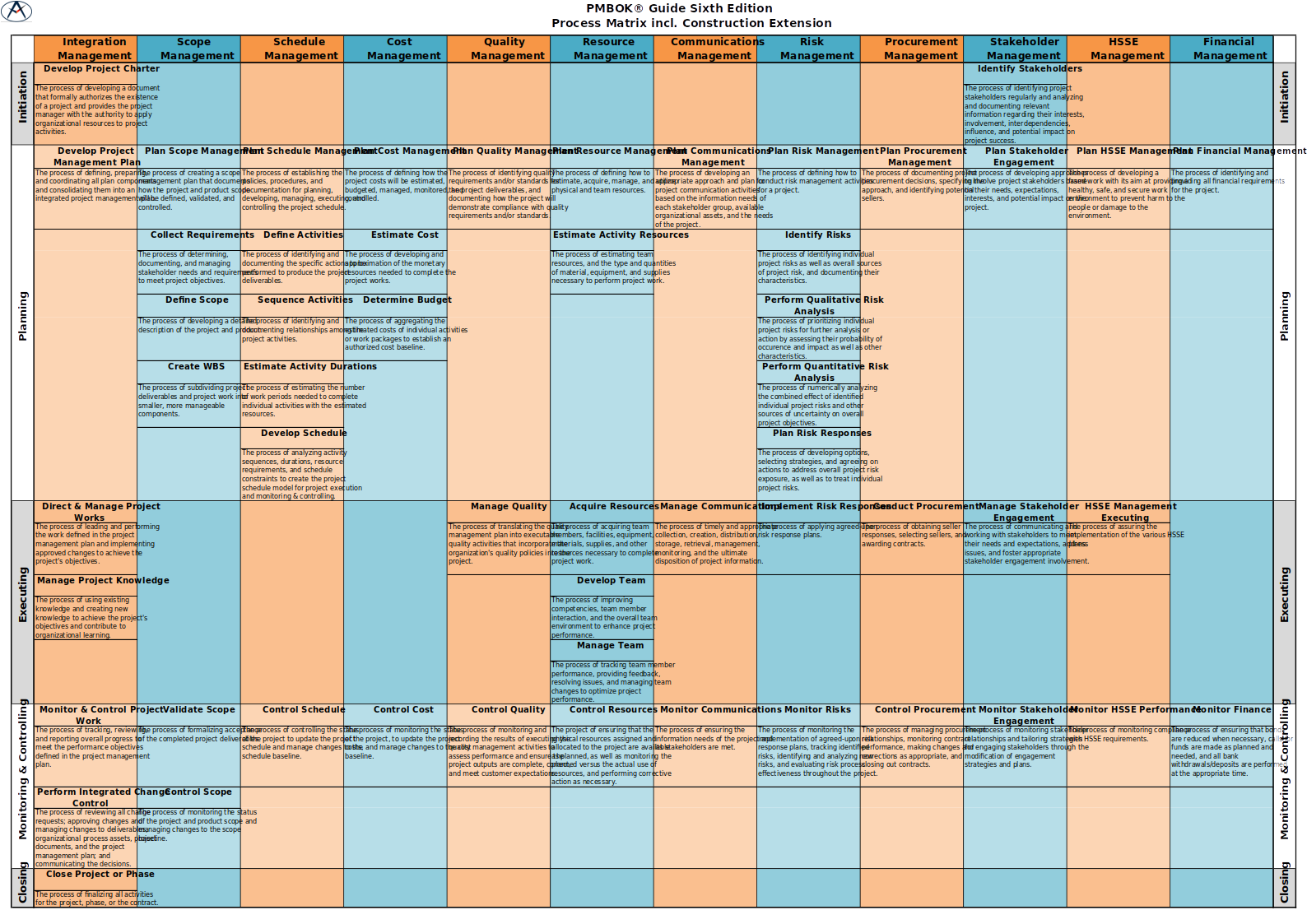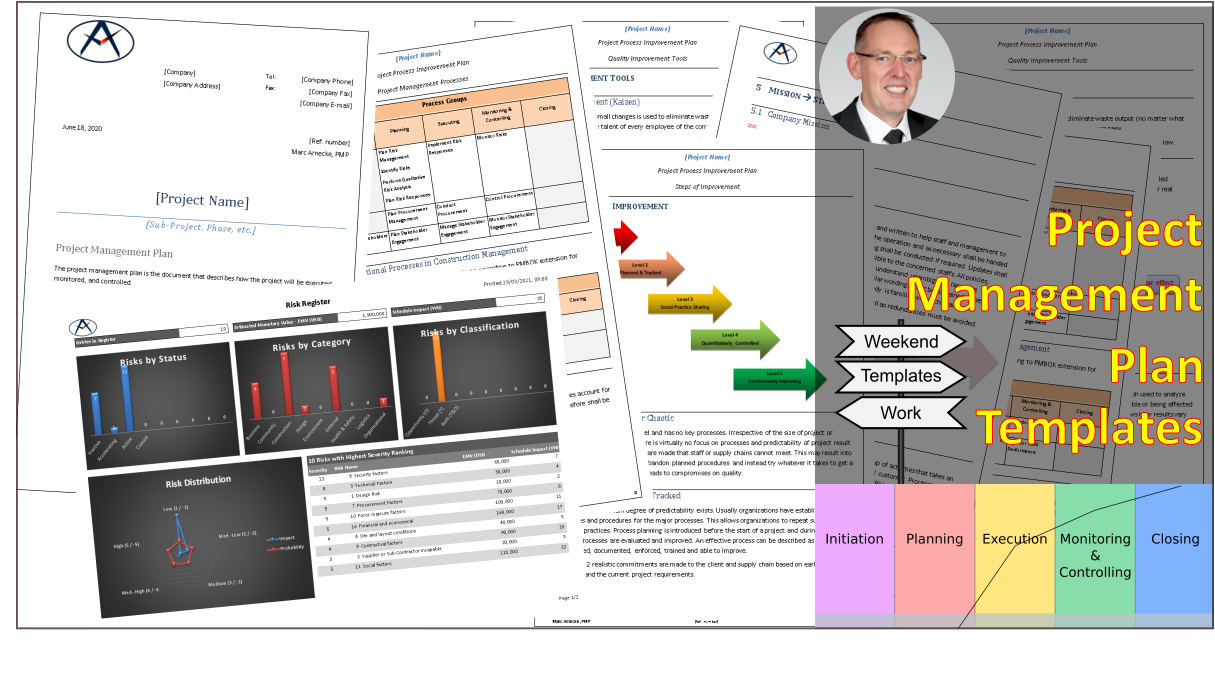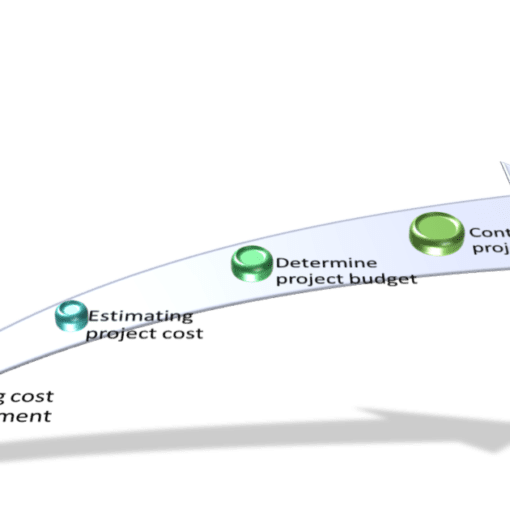A project management plan is a formal document that guides the execution and control of a project. It defines the scope, schedule, budget, quality, risks, and deliverables of the project, as well as the roles and responsibilities of the project team. The project management plan is based on the Project Management Body of Knowledge (PMBOK), which is a set of standards and best practices for project management developed by the Project Management Institute (PMI). The PMBOK covers 12 principles and eight performance domains that are essential for delivering value through projects. The project management plan is a living document that should be updated and refined throughout the project lifecycle to reflect any changes or adjustments that may occur. The project management plan is a key communication tool that helps stakeholders understand the project objectives, expectations, and progress.
If you are a project manager or aspiring to become one, you might have heard of the term PMBOK6. PMBOK stands for Project Management Body of Knowledge, and it is a guide that provides best practices and standards for managing projects across different domains and industries. The sixth edition of PMBOK was published in 2017 by the Project Management Institute (PMI), and it contains 49 processes that are grouped into 10 knowledge areas and five process groups. One of the key outputs of the PMBOK6 processes is the project management plan.
Read in this article:
- What are the contents of a project management plan?
- How to write a project management plan?
- What are common mistakes in writing a project management plan?
- Do templates help in writing a project management plan?
- Where to find the best project management template sets?
- Is writing a project management plan difficult?
 PMBOK Process Matrix
PMBOK Process Matrix
What are the contents of a project management plan?
A project management plan typically consists of the following sections:
- Project overview:
This section provides a brief summary of the project background, purpose, objectives, scope, deliverables, assumptions, constraints, and success criteria. - Project organization:
This section defines the roles and responsibilities of the project team members and other stakeholders, as well as the reporting and communication structure. - Project management processes:
This section describes the processes and tools that will be used to manage the project throughout its life cycle, such as planning, executing, monitoring and controlling, and closing. - Project baselines:
This section establishes the baselines for scope, schedule, and cost that will be used to measure and control the project performance. It also includes the work breakdown structure (WBS), the activity list, the network diagram, the Gantt chart, the resource plan, the budget, and the change management plan. - Project performance measurement:
This section defines the key performance indicators (KPIs) and metrics that will be used to monitor and report on the project progress and quality. It also specifies the frequency and format of the project status reports and dashboards. - Project risk management:
This section identifies and analyzes the potential risks that may affect the project outcomes and defines the strategies and actions to mitigate or avoid them. It also includes the risk register, the risk matrix, and the risk response plan. - Project stakeholder management:
This section identifies and analyzes the needs and expectations of the project stakeholders and defines the strategies and actions to engage and communicate with them effectively. It also includes the stakeholder register, the stakeholder analysis matrix, and the stakeholder engagement plan.
How to write a project management plan?
A project management plan is essential for ensuring that the project meets its objectives and delivers value to the stakeholders. It also helps to avoid scope creep, cost overruns, delays, and conflicts.
To write a project management plan, you need to follow these steps:
-
Identify and engage the project stakeholders
These are the people or organizations that have an interest or influence on the project outcome. They should be identified, analyzed, and classified according to their power and interest levels. -
Define the project scope
This is the description of what the project will deliver and what it will not deliver. It should include the project objectives, deliverables, assumptions, constraints, and exclusions. -
Develop the project schedule
This is the timeline of the project activities and milestones. It should show the start and end dates, dependencies, durations, and resources for each task. -
Estimate the project budget
This is the amount of money that will be spent on the project. It should include the costs of labor, materials, equipment, travel, contingency, and overhead. -
Plan the project quality
This is the standard of excellence that the project will adhere to. It should include the quality criteria, quality metrics, quality control methods, and quality assurance processes. -
Plan the project communication
This is the way that information will be shared among the project team and stakeholders. It should include the communication objectives, methods, frequency, roles, and responsibilities. -
Identify and analyze the project risks
These are the uncertain events or conditions that may affect the project positively or negatively. They should be assessed in terms of their probability and impact and prioritized accordingly. -
Plan the project risk responses
These are the actions that will be taken to reduce or eliminate the negative risks or enhance or exploit the positive risks. They should be aligned with the risk priorities and assigned to responsible parties. -
Plan how to manage the project stakeholders' expectations and involvement
This is the way that the project will communicate with and involve the stakeholders throughout the project lifecycle. It should include the stakeholder engagement strategies, techniques, and tools.
By following these steps, you can write a comprehensive and effective project management plan that will guide your project to success.
What are common mistakes in writing a project management plan?
A project management plan is a document that outlines the scope, objectives, resources, risks, and deliverables of a project. It is essential for ensuring that the project is completed on time, within budget, and with quality. However, many project managers make some common mistakes when writing a project management plan that can jeopardize the success of their projects. Here are some of them and how to avoid them.
-
Not involving the stakeholders
A project management plan should reflect the needs and expectations of the stakeholders, who are the people or groups that have an interest or influence in the project. Stakeholders can include customers, sponsors, team members, suppliers, and others. By involving them in the planning process, you can ensure that their requirements are met and that they are committed to the project. To avoid this mistake, you should identify your stakeholders early on and communicate with them regularly throughout the project. -
Not defining the scope clearly
The scope of a project is the sum of all the work that needs to be done to deliver the desired outcome. A clear and detailed scope statement can help you avoid scope creep, which is when the project expands beyond its original boundaries due to changes or additions. Scope creep can cause delays, cost overruns, and quality issues. To avoid this mistake, you should define the scope of your project in terms of what is included and what is excluded, and get it approved by the stakeholders. -
Not estimating the resources accurately
The resources of a project include the time, money, people, equipment, materials, and other assets that are needed to complete the project. Estimating the resources accurately can help you allocate them efficiently and avoid resource shortages or wastage. To avoid this mistake, you should use reliable methods and tools to estimate the resources of your project, such as historical data, expert judgment, analogy, parametric estimation, or bottom-up estimation. -
Not identifying and managing the risks
The risks of a project are the uncertain events or conditions that can have a positive or negative impact on the project objectives. Identifying and managing the risks can help you prevent or mitigate their effects and increase the chances of success. To avoid this mistake, you should perform a risk analysis to identify the potential risks of your project, assess their probability and impact, and develop response strategies for them. -
Not setting realistic and measurable objectives
The objectives of a project are the specific and measurable outcomes that you want to achieve by the end of the project. Setting realistic and measurable objectives can help you track the progress and performance of your project and ensure that it aligns with the expectations of the stakeholders. To avoid this mistake, you should use SMART criteria to set your objectives: Specific, Measurable, Achievable, Relevant, and Time-bound.
Do templates help in writing a project management plan?
One way to create a project management plan is to use a template. A template is a pre-formatted document that contains the basic structure and sections of a project management plan. A template can save time and effort by providing a consistent and standardized format for the project documentation. A template can also help to avoid missing important information or details that are required for the project success.
However, using a template does not mean that the project management plan is complete or accurate. A template is only a starting point and a guide for the project manager. The project manager still needs to customize and tailor the template to fit the specific needs and characteristics of the project. The project manager also needs to verify and validate the information and data in the template to ensure that they are relevant and reliable.
Therefore, templates can help writing a project management plan, but they are not a substitute for the project manager's skills and judgment. Templates can provide a framework and a direction for the project documentation, but they cannot replace the project manager's creativity and critical thinking. Templates can be useful tools, but they should be used with caution and care.
Where to find the best project management template sets?
If you are looking for a complete project management template set, you might be overwhelmed by the number of options available online. There are hundreds of websites that offer various templates for different aspects of project management, such as planning, budgeting, scheduling, risk analysis, communication, and more. But how do you know which ones are reliable, comprehensive, and suitable for your needs?
In this blog post, we will help you find the best project management template set for your projects. We will review some of the most popular and reputable sources of project management templates, and compare their features, advantages, and disadvantages. We will also give you some tips on how to customize and use the templates effectively.
Here are some of the sources I will cover:
- Project Management Institute (PMI):
The leading professional association for project managers, PMI offers a wide range of templates based on the best practices and standards of project management. You can access these templates for free if you are a PMI member, or purchase them individually or as a bundle if you are not. - Smartsheet:
A cloud-based platform for managing and automating collaborative work, Smartsheet provides hundreds of ready-made templates for various project management functions and industries. You can use these templates as they are, or modify them to fit your specific requirements. You can also integrate Smartsheet with other tools and apps, such as Microsoft Office, Google Workspace, Salesforce, Slack, and more. - Template.net:
A website that offers thousands of templates for various purposes and formats, Template.net has a dedicated section for project management templates. You can find templates for project proposals, plans, reports, charts, dashboards, checklists, and more. You can download these templates in various formats, such as Word, Excel, PowerPoint, PDF, etc. - Office Timeline:
A software that helps you create professional-looking timelines and Gantt charts for your projects, Office Timeline also offers a collection of free project management templates that you can use with Microsoft PowerPoint. You can choose from different styles and themes, and customize the templates with your own data and colors. - ProjectManager.com:
An online project management software that helps you plan, track, and report on your projects, ProjectManager.com also has a library of free project management templates that you can download and use with any software. You can find templates for project plans, schedules, budgets, risks, issues, changes, lessons learned, and more. - Worldofpm.com:
A website that provides tools, templates, and tips for project managers. Whether you are a beginner or an expert, you can find useful articles on various topics related to project management. The website also offers various project management templates, which are available in the usual office formats and are completely editable. Worldofpm.com is your one-stop destination for everything project management.
These are just some of the sources of project management templates that you can explore. Depending on your preferences and needs, you might find one or more of them useful for your projects. However, before you start using any template, make sure to check its quality, accuracy, completeness, and relevance. Also remember that templates are not a substitute for good project management skills and practices. You still need to apply your own knowledge, experience, judgment, and creativity to make your projects successful.
Is writing a project management plan difficult?
Many people think that writing a project management plan is a difficult and time-consuming task. However, it doesn't have to be if you follow the steps outlined above. A project management plan is a document that describes the scope, objectives, deliverables, milestones, risks, and resources of a project. It helps you to plan, execute, monitor, and control your project effectively.
Acquiring and using a good complete template set can ease and shorten your task incredibly. One of the main advantages is that the individual chapters and sub-sections are predetermined and therefore cannot be easily forgotten.

If, contrary to expectations, you are not satisfied, you can cancel your order within 60 days of purchase and your money will be fully refunded automatically.

Download your project plan now and secure another 10% discount
- Regular price:
- 79.99 USD
- Reduced price:
- 29.99 USD
This offer ends in
2750+
Downloads
20
Years experience with large projects
?
Weekends you will spend re-inventing the wheel
60
Days money return
What do recent buyers say about my templates?
Good
The structure of your plan is well-organized, making it easy to navigate and understand. It’s a testament to your expertise.
Best ever seen
Very good and very profitable
Good Template
Use the template for your business
Exactly what I needed
I have been using these for a couple of month now and I LOVE THEM. I was sent a couple of the forms by a friend, so this is me “ordering the complete set” for what I’ve got coming up next.
Cindy
I love your templates. Unfortunately, I’m not in the construction trade so a few of the included templates aren’t for me, but the rest are great and a huge time saver. You saved me many hours of work. In this respect, the price is more than justified.
Response from World of Project Management
Hello Cindy,
Thanks for your feedback!
I’m happy to hear that my templates have been of help to you, even though some are specific to the construction business.
All the best with your project!
Best regards,
Marc
Contact
Please feel free to leave a comment below or contact me for more.
No related posts found





